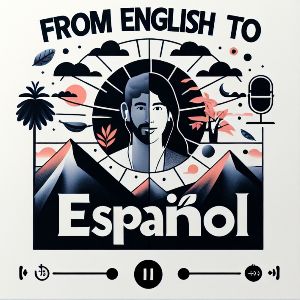Mastering Double Negatives in Spanish
April 04, 2025Categories: Spanish Grammar Basics, Lesson


From English to Español: Bridging the Grammar Gap with Alberto Rodriquez
Welcome to "From English to Español: Bridging the Grammar Gap", the podcast created specifically for English speakers ready to take their Spanish skills to the next level. Each episode dives into the core differences and surprising similarities between English and Spanish grammar, unraveling the complexities of the language in a way that’s clear, practical, and easy to follow. We'll break down essential concepts like verb conjugations, gendered nouns, and the tricky subjunctive mood, offering insights and tips that simplify these new rules and help you avoid common pitfalls. By comparing Spanish structures directly with English, you’ll quickly understand how to adapt what you already know into accurate, natural Spanish. Whether you’re a beginner or looking to brush up on advanced topics, this podcast is your comprehensive guide for bridging the gap between English and Spanish grammar, so you can speak and write with confidence. Join us daily for a new rule or concept, complete with practical examples, exercises, and memorable explanations that make learning Spanish engaging and enjoyable. Perfect for self-learners, students, and anyone serious about mastering Spanish grammar, "From English to Español" is your go-to resource for building fluency from the ground up.
Understanding Double Negatives in Spanish Grammar
Mastering the use of negative expressions in Spanish is crucial for English speakers learning the language, particularly because it involves a distinct grammar rule: double negatives. In Spanish, unlike English, using two negatives in one sentence is both grammatically correct and often necessary. This lesson provides a thorough examination of this concept, supported by examples and exceptions, to enhance your understanding and proficiency.
The Rule of Double Negatives
In Spanish, negative words are repeatedly used for emphasis and clarity. When constructing a negative sentence, any element introduced by a negative expression must also reflect negativity. Here are several common negative words:
- Nada - nothing
- Nadie - nobody
- Ningún - none
To demonstrate correct usage, consider the following examples:
- No tengo nada. (I don’t have anything.)
- Nadie llamó a mi puerta. (Nobody called at my door.)
- No hay ningún libro en la mesa. (There isn’t any book on the table.)
In each sentence, the presence of a negative word such as nada, nadie, or ningún requires another negative word, which is usually no.
Exceptions to Double Negatives
Despite the general rule, there are instances where double negatives may not apply. Several exceptions include:
- Answers to negative questions: When responding to negative questions, sometimes only one negative word is needed. Example: No ¿viste a alguien? - No, no vi a nadie. (Didn't you see anyone? - No, I didn’t see anyone.)
- Expressions with the verb ser: In some fixed expressions or idioms with ser, the double negative may not be required. Example: Eso no es nada. (That is nothing.) Here, no is used for emphasis on nada.
Understanding these exceptions will not only help you avoid mistakes but also provide insight into the nuances of Spanish language structures.
Common Pitfalls to Avoid
Spanish learners often fall into the trap of translating sentences literally, which might lead to incorrect usage of double negatives. It’s essential to comprehend that Spanish logical structure often differs from English. Therefore, immersion and practice are key to mastering this aspect of the language.
Engaging with authentic Spanish content, such as books, films, and conversations, is indispensable for reinforcement. Additionally, consider seeking feedback from proficient speakers to further solidify your acquisition of negative constructs.
For those keen to expand their understanding and discover more about this and other Spanish grammar nuances, a focused approach to language learning can be particularly beneficial. Our platform offers a rich array of resources tailored to your educational journey. Learn more at ScienceBasedLearning.com.
Embrace the complexity and beauty of Spanish grammar by continually refining your skills. This endeavor, while challenging, is rewarding for those eager to deepen their linguistic competencies.
If you're interested in making substantial progress on your language learning pathway, access comprehensive materials and structured programs by checking out our platform. Get Your Copy and embark on a transformative journey.